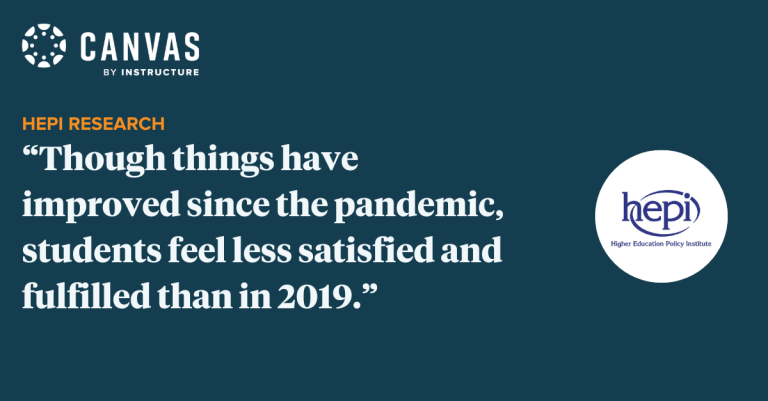
With holistic development rising as one of the top three factors in student success, schools and institutions are shifting to student-centric approaches and pedagogy. As a result, human-centered design is taking center stage, transforming learning environments and materials for the better.
This approach puts the students at the forefront, enhancing the academic experience and meeting students where they are. Learning environments can increase student success on all levels with an effective human-centered approach to learning. In this article, we’ll take a look at the benefits of human-centered design and how it can improve the learning experience through a robust learning management system.
What is Human-Centered Design?
Human-centered design is a process and approach that focuses on the student to produce positive outcomes in learning. This problem-solving tool is based on human science pedagogy, refining how administrators, educators, and instructional designers approach crafting academic experiences.
Historically, human-centered design has roots in psychology and user-experience design. However, its significance in education has grown as technology and wellness continue to transform the academic ecosystem. With education evolving, human-centered design takes learning pedagogy to the next level. In effect, schools and institutions are now prioritizing student involvement and feedback to gain an understanding of their needs and perspectives. This increases the student's involvement in the decision-making process, amplifying their voices.
In addition, human-centered design has contributed to flexible learning options, personalized learning materials, and skills-based curricula. Let’s take a look at the principles guiding this modern instructional method.
Principles of Human-Centered Design in Education
Meeting the diverse needs and preferences of students can be a challenge. However, with the proper guidelines, learning can be an immersive experience for all student populations. To facilitate effective learning design in education, three core human-centered design principles guide academic planning.
1. Empathy: Understanding the thoughts, motives, challenges, and needs of students is essential to human-centered design in education. With empathetic design, the learner's strengths and weaknesses are acknowledged, giving them an adaptable and tailored learning experience.
2. Interactive Design: The iteration process focuses on testing and refining educational materials, tools, and strategies. This approach ensures academic resources are up-to-date and can evolve to meet the changing needs of students.
3. User Feedback: Soliciting feedback from students helps administrators and educators make informed decisions. Learning experiences are then planned based on student preferences, experiences, and concerns. Learning management systems, like Canvas, can be used to gather student insight through surveys or student analytics.
These core principles are a foundation for instructional practices that center the students. Still, other important principles impact human-centered design in learning environments. Let’s take a look.
- Evolve the Learning Process: With changing student needs, evolving educational technologies, and a shift in academic demand, educators are adapting strategies to best support instructional transitions. Having digital fluency also benefits both educators and students as technology continues to advance in academia.
- Understand Educational Context: Addressing specific student needs improves the overall success of the learning community. Context applies to the student's situational needs and approaches to learning. In higher education, traditional and non-traditional students can have different academic goals and experiences; however, designing instruction with context ensures each student is accommodated.
- Provide Equitable Access: Providing equitable and inclusive instruction addresses diverse needs, offering access to all learners. Students with auditory, visual, motor, or cognitive impairments require quality instruction in face-to-face and digital learning spaces. Accessibility extends beyond a student’s sensory or personal learning needs, ensuring academic opportunity and achievement across various student populations.
- Offer Student-Centered Instruction: Quality instruction reflects the learner's interest, builds on prior knowledge, and encourages engagement, supporting the student's educational goals. Student-centered instruction personalizes the learning experience and pace, empowering students to take ownership of their learning journey.
- Assess Student Progress: Assessment helps educators evaluate where students are in the learning process. Insights highlight the learner's strengths and weaknesses, improving the educator's approach to personalized learning.

Human-Centered Design in Canvas
Use a learning management system to provide students with flexible and equitable learning options. With Canvas, administrators and educators can take advantage of its innovative features to offer holistic learning opportunities. Take a look at the 13 key LMS features that benefit student learning.
Canvas remains the leading LMS solution for schools and institutions because of its advanced and user-friendly interface. Students can easily navigate Canvas, accessing the resources and content they need to learn. In addition, with Canvas customization, educators can personalize learning paths, tailoring academic content when needed. This keeps students engaged with their personal learning journeys.
Modern learning modalities, such as Hyflex and other online learning options, are supported daily through Canvas from anywhere. Take a look at how one K-12 school system uses Canvas to offer high-quality learning support to teachers and students. In higher education, see how one university uses Canvas to provide flexible and skills-based learning that is accessible worldwide.
Benefits of Human-Centered Design in Learning Environments
Prioritizing human-centered design leads to a positive shift in student culture, learning practices, and academic achievement. When students feel nurtured throughout their learning journey, it leads to success and embraces lifelong learning.
With a focus on meeting students where they are, human-centered design benefits students of all backgrounds and stages of learning. Here are some of its key benefits:
- Helps educators and institutions develop academic solutions
- Focuses on the students and their needs
- Embeds human pedagogy into the learning process
- Builds trust between students and their learning environment
- Increases student engagement and retention
- Reduces bias in the classroom
Implementing Human-Centered Design in Your Educational Practice

Transform learning spaces by putting human-centered design into practice. With this approach, educators engage with students, tailor learning experiences, and refine the learning process to provide better student outcomes. However, each learning environment has a unique set of learners and needs. This is why educators are encouraged to leverage student communication, collaboration, and feedback to improve their instructional practices. By understanding what motivates their learners, educators can provide the desired resources.
Use Canvas and other digital tools to drive communication and collaboration in the learning environment. Edtech tools can also facilitate personalized learning with customization features, allowing educators to tailor online modules and courses. To further amplify the effectiveness of learning tools in the classroom, collect insights and analytics on student performance. These insights show what works best for students and where change is needed.
Using Digital Tools to Humanize Learning
With the right digital tools, implement an effective human-centered approach in your learning environments. Learn more about humanizing the student experience through student-centric learning.
Related Content
 hepi_blog.png
hepi_blog.pngBlog Articles
 canvas-offline-blog-thumbnail-2024.jpg
canvas-offline-blog-thumbnail-2024.jpgBlog Articles
 img_4584_2.jpg
img_4584_2.jpgBlog Articles